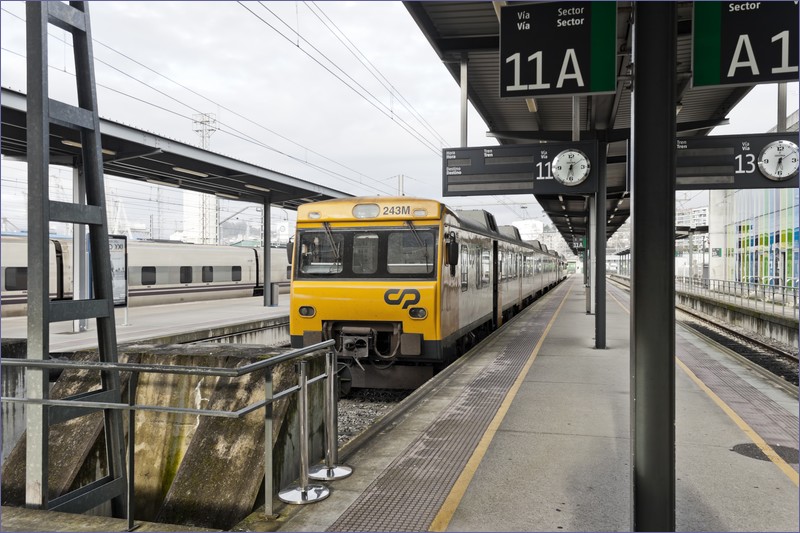Train travel in Spain is very comfortable but a bit complicated. Spain has most extensive high-speed rail network in Europe. In recent years, high-speed railway lines have been opened to, for example, A Coruna, Oviedo, Malaga, Figureres, and Alicante. In the country there are four rail gauges – most common is Iberian gauge (1668 mm) but new railway lines are built on standard gauge (1435 mm).
Last updated: 28.01.2024
The first railway line in Spain was opened on 28 October 1848 from Barcelona to Mataro (29,1 km). Earlier, on 8 October 1848 a test train carried 400 people in 10 passenger carriages between the cities.
In 1851 the railway line linked directly directly with the Royal Palace of Aranjuez was inaugurated.
Over the next decades, a number of new railway lines were built. In 1863 tracks reached border with Portugal.
In 1911 the first railway line in Spain was electrified – the section between Gergal and Santa Fe de Mondujar of the Linares-Almeria line.
In 1992 , the first high-speed line in Spain was inaugurated (Madrid – Sevilla).
Train travel in Spain – long distance trains
There are many long-distance trains and Media Distancia trains in Spain. Most of them are operated by RENFE. On most popular high-speed routes there are three competing high speed rail operators – RENFE, low-cost brand Avlo (owned by RENFE), Iryo and Ouigo. In the future ADIF (the owner of the infrastruture) plans to open up more routes to competition.
Long-distance trains are comprised of modern electric or diesel multiple units with coaches (no compartments). Passenger carriages from Arco trains were sold to Portugal.
Modern and comfortable overnight trains branded “Trenhotel” were ceased in March 2020 and rolling stock probably have been sold. There are no plans to reinstate overnight domestic services in Spain.
Seat reservation is compulsory in a long-distance and medium-distance trains in Spain.
Railway map of Spain (Wikimedia)
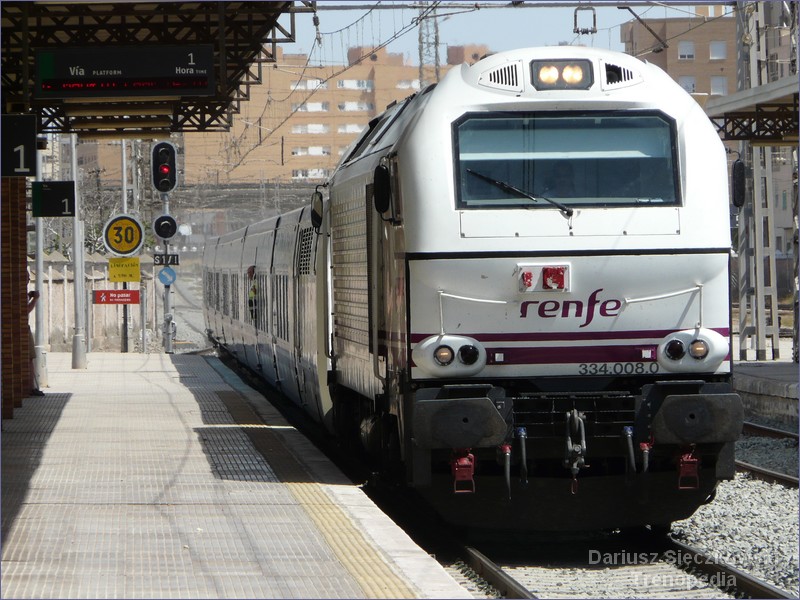
Train Timetable – long distance trains
Train tickets in Spain can be purchased at ticket offices, on official websites, self-service ticket machines at stations, at travel agencies and international points of sale. Ticket prices vary depending on date, time and number of passengers. Tickets purchased in advance are usually much cheaper – the price goes up as the departure day gets closer. It’s best to buy tickets when tickets are released to sale – between 50 to 60 days before the planned journey.
A drop in prices on high demand routes was saw when low-cost trains Ouigo and Iryo started.
There are many discounts and passes.
Timetable and prices
RENFE – official website. Search engine, additional information, online shop
Avlo – low-cost high speed trains operated by RENFE.
Ouigo – low-cost high speed services; SNCF subsidiary.
Iryo – low-cost high speed trains; owned by Intermodalidad de Levante S.A. (ILSA).
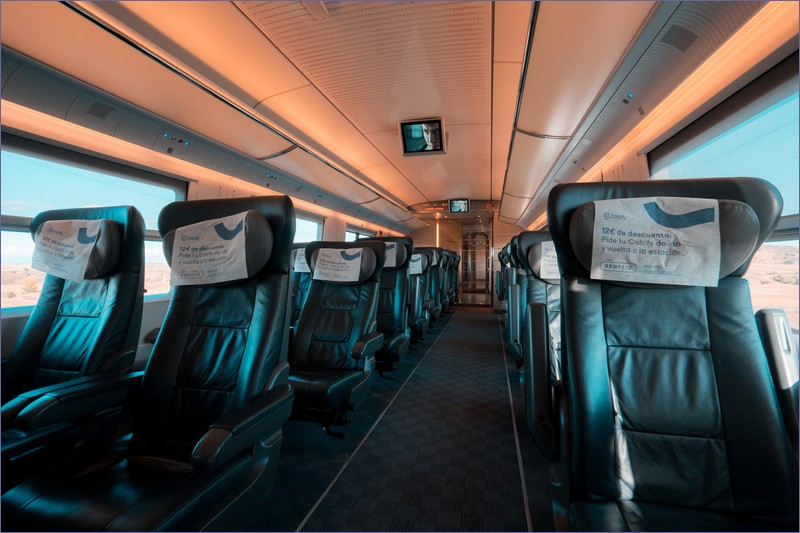
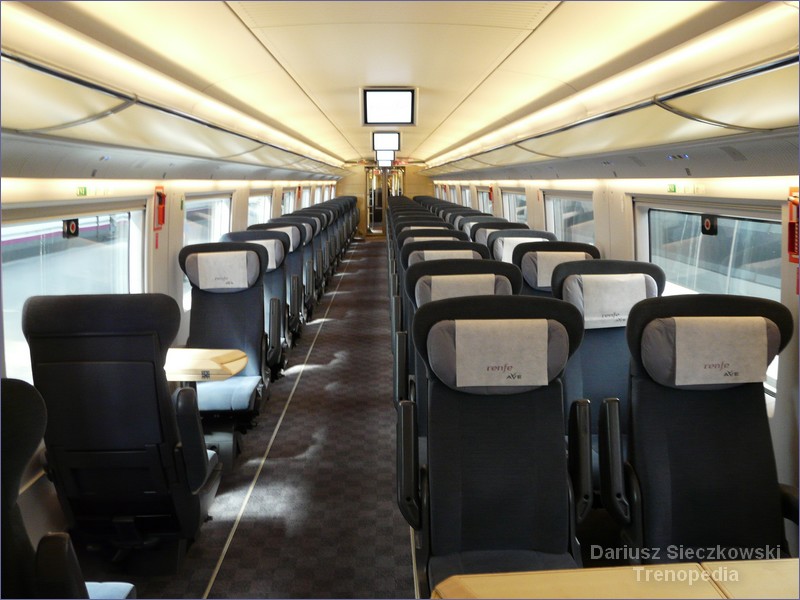
Renfe Spain Pass
If you want to travel across Spain by train, you can use Interrail or Renfe Spain Pass. The pass is aimed at people residing outside Spain. Renfe Spain Pass allows you to take 4, 6, 8 or 10 journey within a month at a discounted rate in all Renfe large and medium distance trains, including AVE. When booking, you can choose between 1st class (Club, Business) or 2nd class (Tourist).
The Renfe Spain Pass is personal and non-transferable. The pass must always be presented together with a valid passport.
Renfe Spain Pass is a perfect option, if you want to travel between most important Spanish cities.
Renfe Spain Pass – online shop
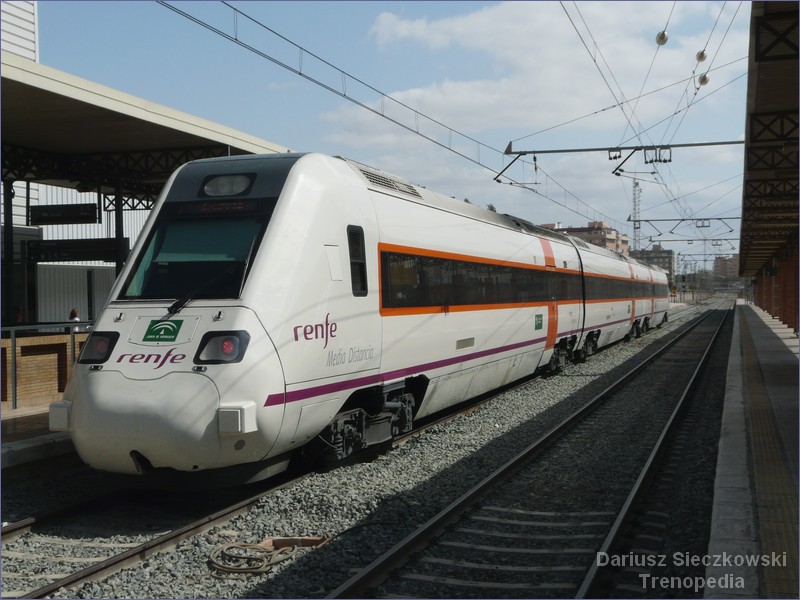
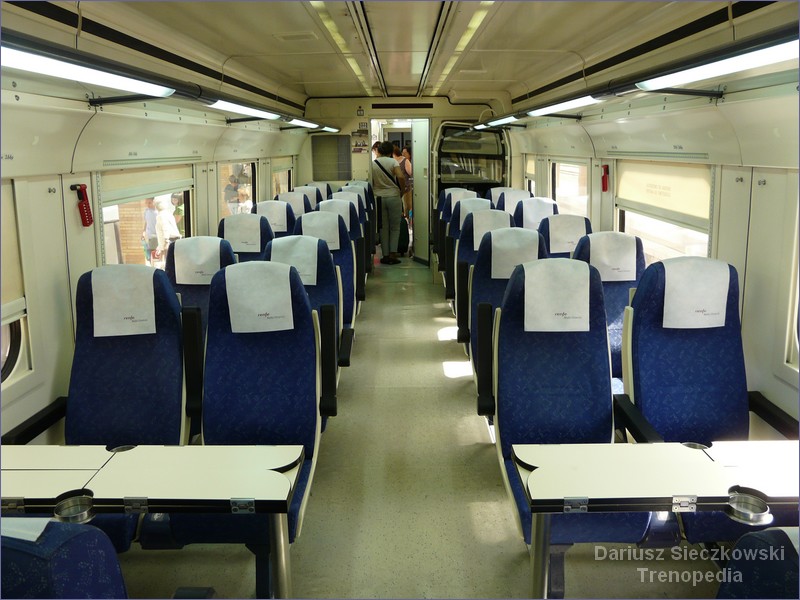
Train travel in Spain – commuter trains
There are commuter trains around the largest cities in Spain, as well as on the routes of the FEVE narrow-gauge railway network. Suburban trains are named Cercanías. These trains are the least comfortable means of transport, intended for short distances. In the past, some of them didn’t even have toilets. In timetables, trains are marked with the letter “C” and a line number, in the case of the FEVE network, with the letters “CF” and a line number. Seat reservation is not required.
More information
Suburban trains in Madrid area
Suburban trains in Seville area
Suburban trains in Valencia area
Most suburban trains are operated by RENFE. In three regions of Spain, regional passenger services are operated by other operators.
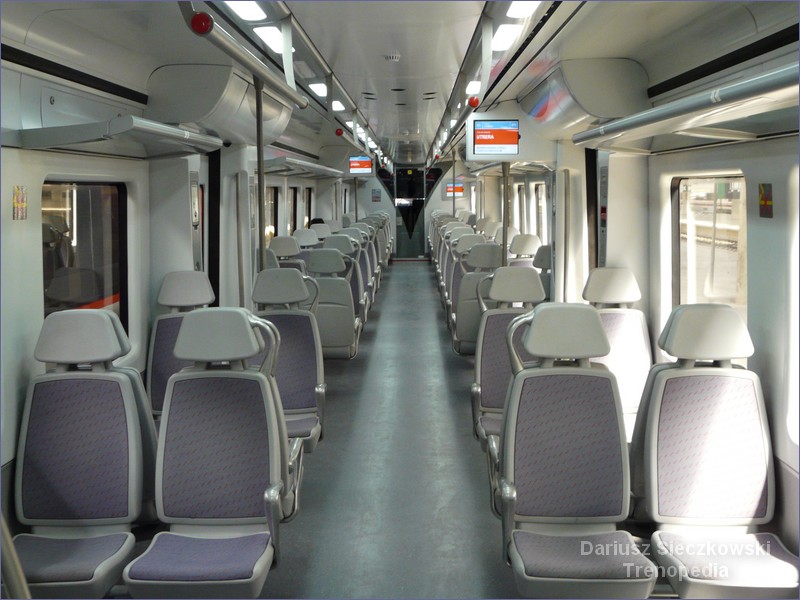
Euskotren – operates suburban rail services in most cities in the Basque Country. Euskotren trains reach the French border station of Hendaye. Most popular routes are from Bilbao to San Sebastian and from San Sebastian to Irun. Euskotren stations are usually located in different locations than RENFE stations. There are no toilets on the trains and the operator does not accept Interrail tickets. The company is owned by the government of the Basque Country.
In addition to rail transport, the operator manages tram and bus connections in the Basque country.
On Saturdays and Sundays, the operator launched night connections running every two hours on selected routes.
Euskotren – official website
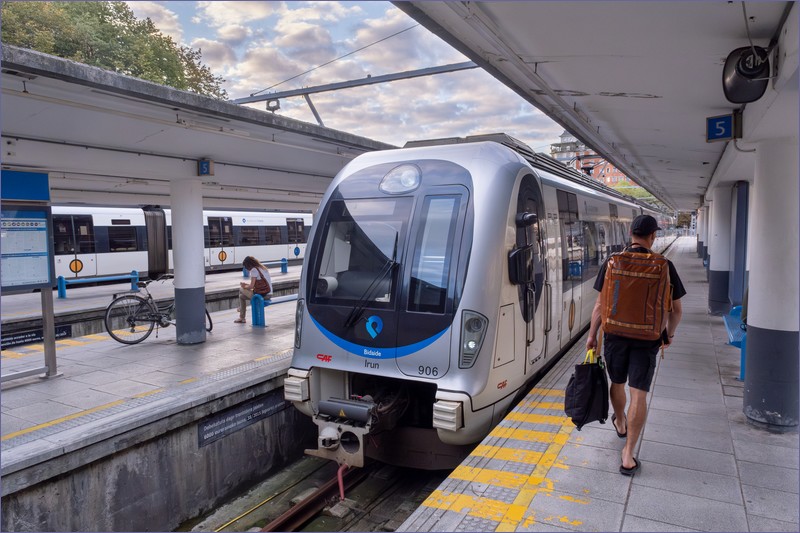
Ferrocarrils de la Generalitat Valenciana (FGV) – the company founded in 1986, on January 1, 1987, took over the narrow-gauge lines around Valencia and Alicante from FEVE. Some of the narrow-gauge lines were converted to a standard gauge and the only remained narrow railway line was Benidorm – Denia (62 km). I don’t know whether the company operates passenger services because the Metro Valencia operates trams, metro and trains in the Valencia region. FGV once ran the popular tourist train “Lemon Express”.
Ferrocarrils de la Generalitat Valenciana – official website
Ferrocarrils de la Generalitat de Catalunya (FCG) – a regional operator operating on metro and suburban lines around Barcelona. In addition to suburban trains, it operates bus services.
The abbreviations for trains mean:
L – metro line
S – suburban railway line
R – intercity railway lines (FCG only operates R5 and R6)
The carrier also operates rack and pinion railways, funicular railways and funicular railways:
Ferrocarrils de la Generalitat de Catalunya – official website
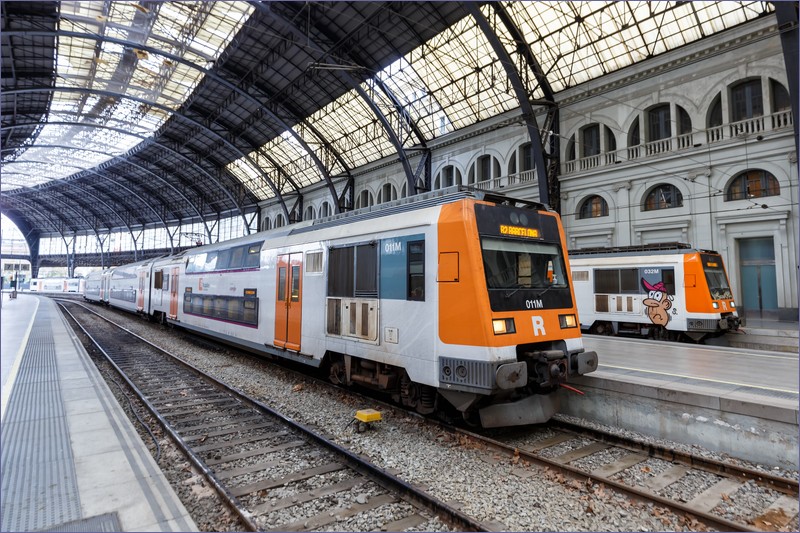
Train travel in Spain – international trains
Spain has a few international passenger services. A dozen or so years ago, comfortable but very expensive night trains ran from Madrid and Barcelona to Baris. Much cheaper but less comfortable was an overnight train from Geneve to Irun.
France
Currently, TGV Duplex trains run from Paris to Barcelona. The trains start at Paris Lyon station and cover a route of over 1,000 kilometers in 6 hours and 35 minutes. The trains run twice daily in each direction. In the summer third train will be added. Ticket prices start from 39 euros. The connection is operated by SNCF.
SNCF International – additional information and online shop
There are regional trains from Port Bou to Perpignan and from Hendaye to Irun (Euskotren).
Portugal
Direct trains from Portugal to Spain run from Porto – Vigo train – train from Porto to Vigo, branded “Celta” is an international train operated by refurbished Portuguese diesel multiple unit. Trains run twice daily in each direction – in the morning and in the evening. Train starts at Porto Campanha station, stops in Nine, Viana do Castelo and Valenca. The end station is Vigo, Spain. Journey time is around 80 minutes.
There is a train connection between Lisboa and Madrid with two changes in Entroncamento and Badajoz.
Sud Express from Lisbon to Irun, Spain or Hendaye, France is suspended. RENFE sold Trenhotel trains and there is only a slim chance to reinstate overnight trains from Lisbon to Iron and Madrid.
The railway line from Faro ends in Vila Real de Santo Antonio, close to the border with Spain. On the Spanish side there is no railway line from the city of Ayamonte. International Guadiana Bridge has only lanes for road traffic.
See also:
Narrow-gauge railways in Spain
Tourist railways in Spain
Train travel in Mallorca
Railways in Europe by country
